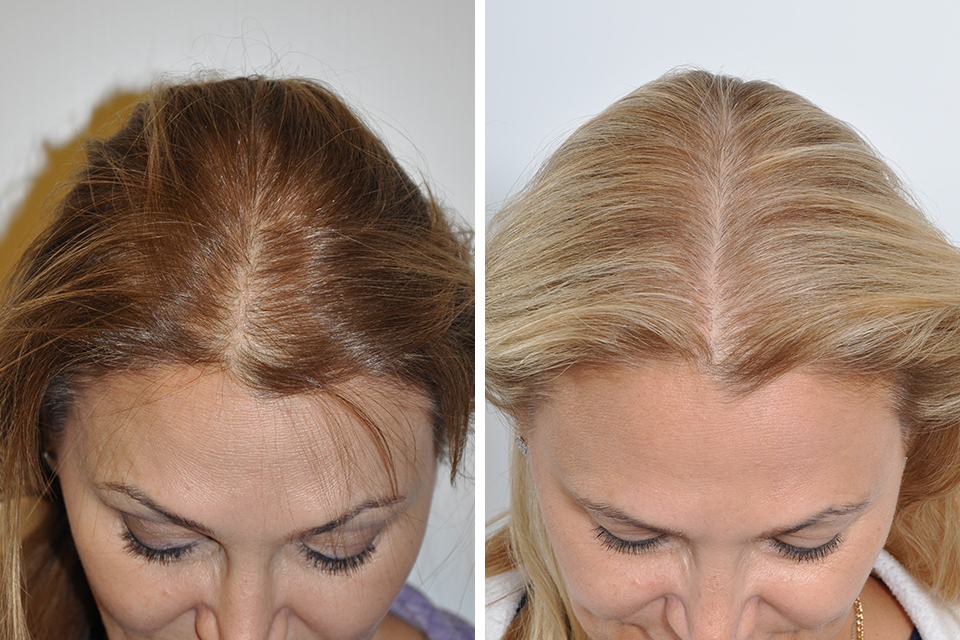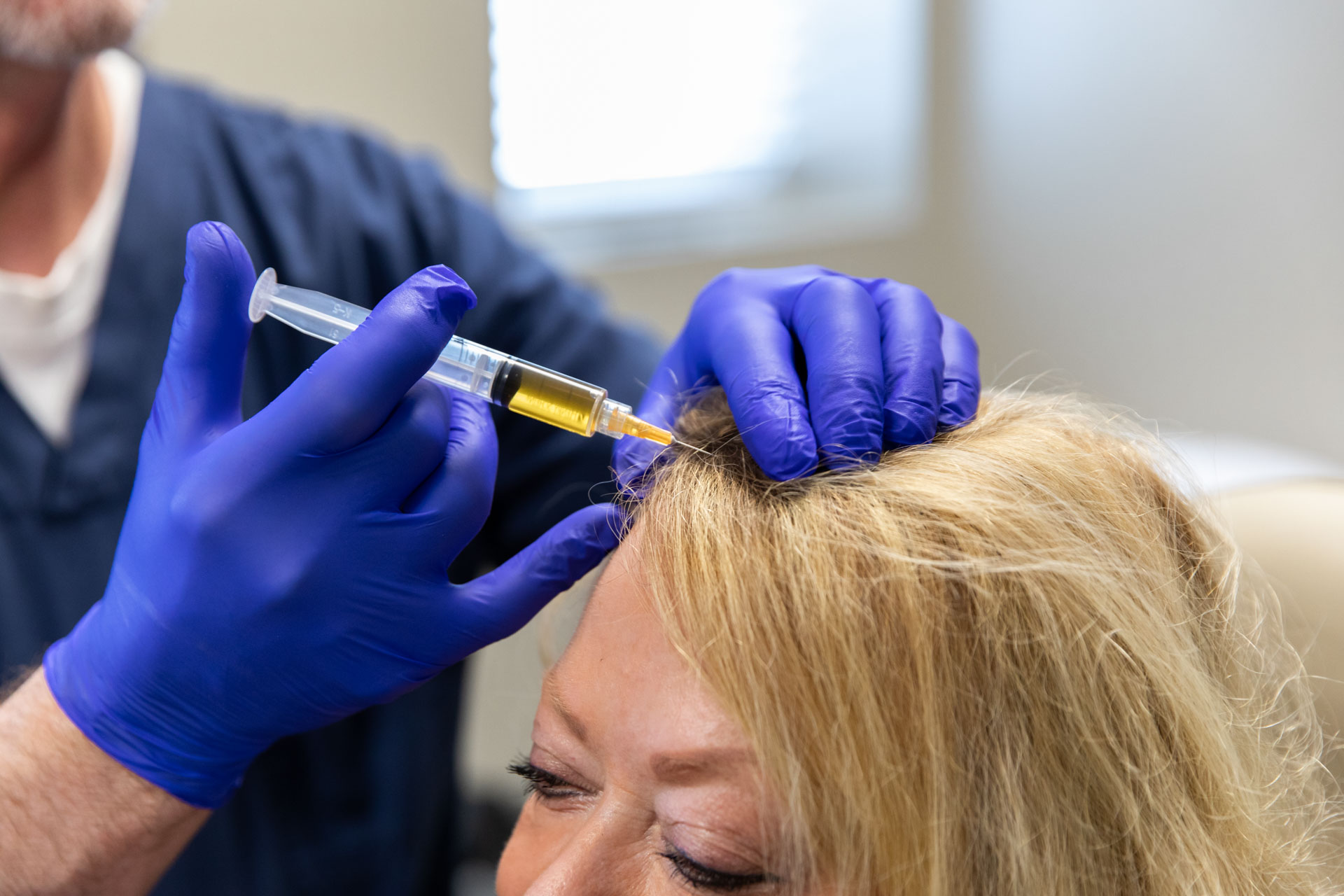Table Of Content

It’s important to keep in mind that hair growth is a complex process and multiple tests may be needed to understand what is causing your hair loss. A biopsy may also be taken if it is initially very unclear what the root causes may be. There are several types of hair loss, some are common and some are rarer, and each with different underlying causes. Some causes of hair thinning and hair loss aren’t permanent and don’t need treatment. Changes to your body can affect how much hair you’re able to grow and when your hair grows.
Medications and medical treatments
When exploring your options, it’s best to talk with your doctor to pinpoint possible causes. Some people find success with home remedies or OTC hair loss treatments, and some don’t notice results until they try prescription medications and treatments. Platelet-rich plasma (PRP) is showing promise in the hair regrowth department, too. Trichologist Bridgette Hill likes this hair growth oil because it contains rosemary oil, which can help stimulate hair follicle growth with daily application.

Ask a doctor about supplementing with iron and zinc
Male baldness is often trivialised – our research shows it should be taken seriously - The Conversation
Male baldness is often trivialised – our research shows it should be taken seriously.
Posted: Thu, 25 Apr 2024 16:29:38 GMT [source]
Your dermatologist can tell you whether your hair may start to grow again on its own. You can search by location, condition, and procedure to find the dermatologist that’s right for you. Use these professionally produced online infographics, posters, and videos to help others find and prevent skin cancer. If you need help finding a primary care doctor, then check out our FindCare tool here. If you decide to style your hair with heated tools, only do so when your hair is dry and use the lowest settings possible.
What are the treatment options for hair loss and thinning?
This is why there are a variety of treatment options available, both by prescription and over the counter (OTC). For those experiencing hair loss, Roman offers a prescription topical spray treatment that combines minoxidil, finasteride, and tretinoin. This 3-in-1 treatment can easily be sprayed onto the affected area of your scalp. Research on whether tretinoin alone can promote hair regrowth remains limited, but an older 2007 study suggests it shows promise as a treatment when combined with other medications. You can receive laser therapy treatments from a dermatologist, but you can also purchase portable laser devices without a prescription.
This involves carefully removing several small sections of skin for laboratory testing. They’ll likely use a combination of your health history — including any recent illnesses, surgeries, life stressors, and family history — and a physical exam to help narrow down the causes. Tinea capitis, also called ringworm of the scalp, is a fungal infection that can affect the scalp and hair shaft. Over time, if not treated early, the size of the patch or patches will increase and fill with pus. Telogen effluvium is a type of sudden hair loss that results from emotional or physical shock, like a traumatic event, period of extreme stress, or a serious illness. This usually happens because of radiation treatment or chemotherapy.
A blend of tea tree, chamomile, peppermint oil, and spearmint oils stimulate growth, and cool, calm, and soothe an itchy or irritated scalp. Reviewers love that it takes a natural approach, although it can take some time to see results without any potent actives at work. According to the Cleveland Clinic, more than 50% of women experience hair loss. (Many Byrdie editors can relate.) But before you despair, there is good news—finding the right topical treatment for hair loss can be a total game-changer.
Changing your hair care (or hairstyle) may help

Depending on the severity, they may recommend corticosteroid injections for additional relief, she adds. With an accurate diagnosis, many people who have hair loss can see hair regrowth. If you need treatment for regrowth, the earlier you start, the more likely you are to see regrowth. Finasteride tends to be more effective if you begin taking it when you first notice hair loss. A dermatologist may also prescribe this medication to treat a woman who has hereditary hair loss and cannot get pregnant.
If finasteride works for you, you will need to keep taking it to continue getting results. Before taking this medication, be sure to discuss possible side effects with your dermatologist. Once your dermatologist has this information, it’s often possible to tell you what’s causing your hair loss.
This medication, which comes in the form of shampoo, is an antifungal agent that may help reduce your body’s production of testosterone and other androgens that lead to hair loss. You can also find 1% strength at your local pharmacy, but it may not be as effective. This medication, which you can purchase over the counter (OTC), comes in foam or liquid form.
Your clinician might prescribe anti-inflammatory medications, like corticosteroids, if hair loss seems related to an autoimmune condition. Because so many things can cause hair loss, it’s best to schedule an appointment with a medical professional if you notice any changes in your hair. While it’s more prevalent in older adults, anyone can experience it, including children.
Hair loss is a common condition, which makes treatment for hair loss common as well. Because of this, you may see several over-the-counter hair loss treatments advertised on television. Surgical procedures for hair loss are less common than prescription or OTC medications for hair loss.
If your blood test reveals that you’re not getting enough biotin, iron, or zinc, your dermatologist may recommend taking a supplement. If you’re not getting enough protein, your dermatologist can tell you how to boost your intake. While you can buy a microneedling device without a prescription, it’s best to check with your dermatologist first. Surgical procedures to treat baldness are not usually covered by insurance.
Switching to a wide-toothed comb can also help prevent too much pulling at the roots. Hair loss can happen for many reasons, but regardless of the cause, it can feel pretty distressing — even if it’s temporary. Start by nixing traumatic styling practices from your roster, Dr. Lo Sicco says, such as aggressive brushing (no teasing!), excessive heat styling, bleaching, and chemical hair straightening.

No comments:
Post a Comment